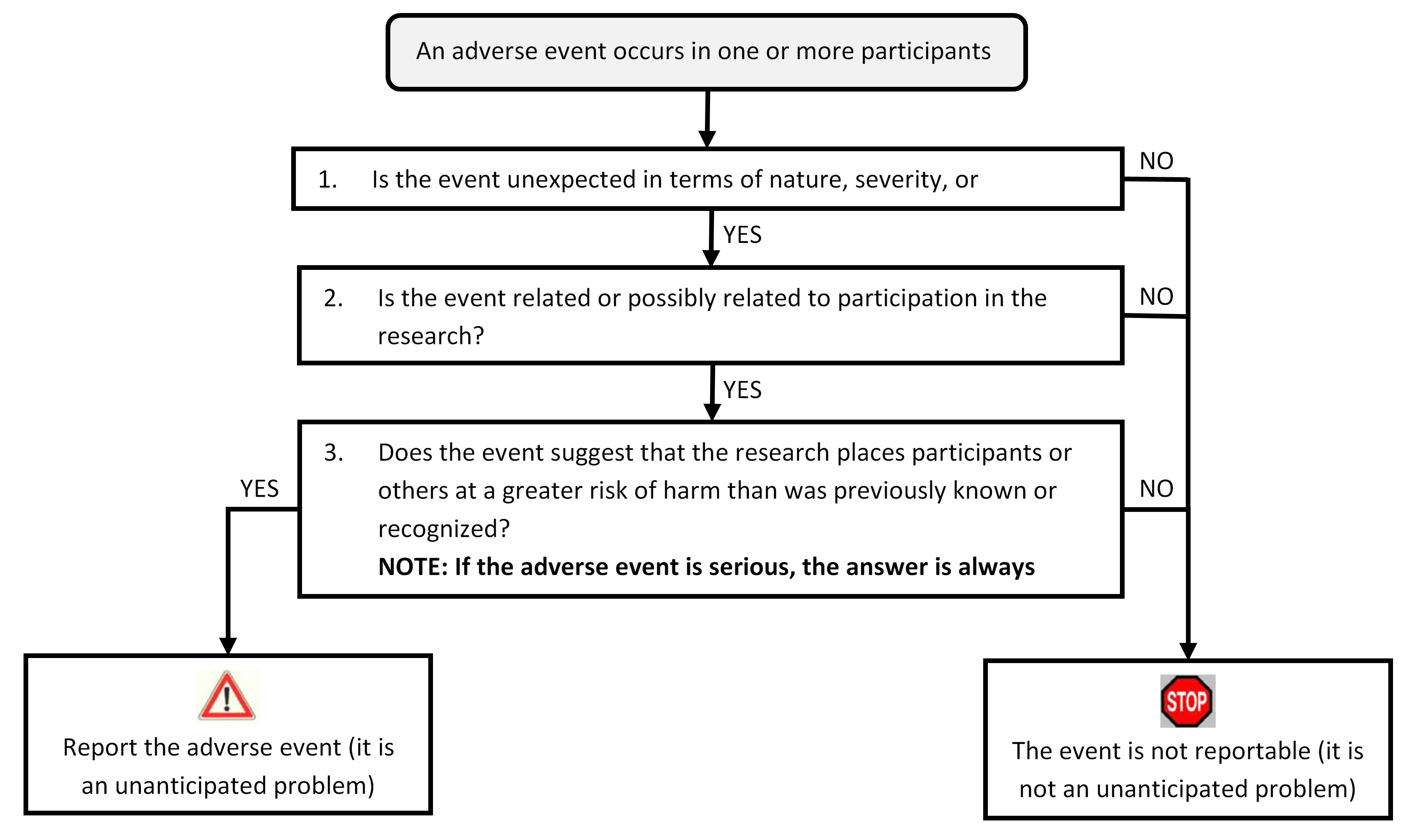Guidance for Determining Which Adverse Events are Reportable
- Is the adverse event unexpected?
An adverse event (AE) is unexpected when its nature, severity, or frequency (in one or multiple participants) is not consistent with either:
- the known or foreseeable risk of adverse events associated with the procedures involved in the research that are described in (a) the HREBA approved protocol-related documents, such as the research protocol, applicable investigator brochures, and the informed consent forms, and (b) other relevant sources of information, such as product labeling and package inserts; OR
- the expected natural progression of any underlying disease, disorder, or condition of the subject(s) experiencing the adverse event and the subject’s predisposing risk factor profile for the adverse event
- Is the adverse event related or possibly related to participation in the research?
Adverse events may be caused by one of more of the following:
- the procedures involved in the research;
- an underlying disease, disorder, or condition of the research participant;
- other circumstances unrelated to either the research or any underlying disease, disorder, or condition of the research participant
In general, adverse events that are determined to be at least partially caused by (A) would be considered related to participation in the research, whereas adverse events determined to be solely caused by (B) or (C) would be considered unrelated to participation in the research.
- Does the adverse event suggest that the research places research participants or others at a greater risk of harm than was previously known or recognized?
The first step in assessing whether an adverse event meets the third criteria for an unanticipated problem is to determine whether it is serious.
A serious adverse event (SAE) is any event that:
- Results in death;
- Is life-threatening (places the participant at immediate risk of death from the event as it occurred);
- Results in inpatient hospitalization or prolongation of existing hospitalization;
- Results in a persistent or significant disability/incapacity;
- Based upon appropriate medical judgment, may jeopardize the participant’s health and may require medical or surgical intervention to prevent one of the other outcomes listed in this definition.
Events that are unexpected, related/possibly related to participation in research, and serious always suggest that the research places subjects or others at a greater risk of physical or psychological harm than was previously known or recognized.
However, other adverse events that are unexpected and related/possibly related to participation in the research, but not serious, would also be unanticipated problems if they suggest that the research places subjects or others at a greater risk of physical, psychological, economic, or social harm than was previously known or recognized. Such events often warrant consideration of substantive changes in the research protocol or informed consent process/document or other corrective actions in order to protect the safety, welfare, or rights of research participants or others.
Note: This guidance is adapted from the OHRP Document “Unanticipated Problems Involving Risks & Adverse Events Guidance (2007)”
This page is available as a pdf document Guidance for Determining which Adverse Events are Reportable

